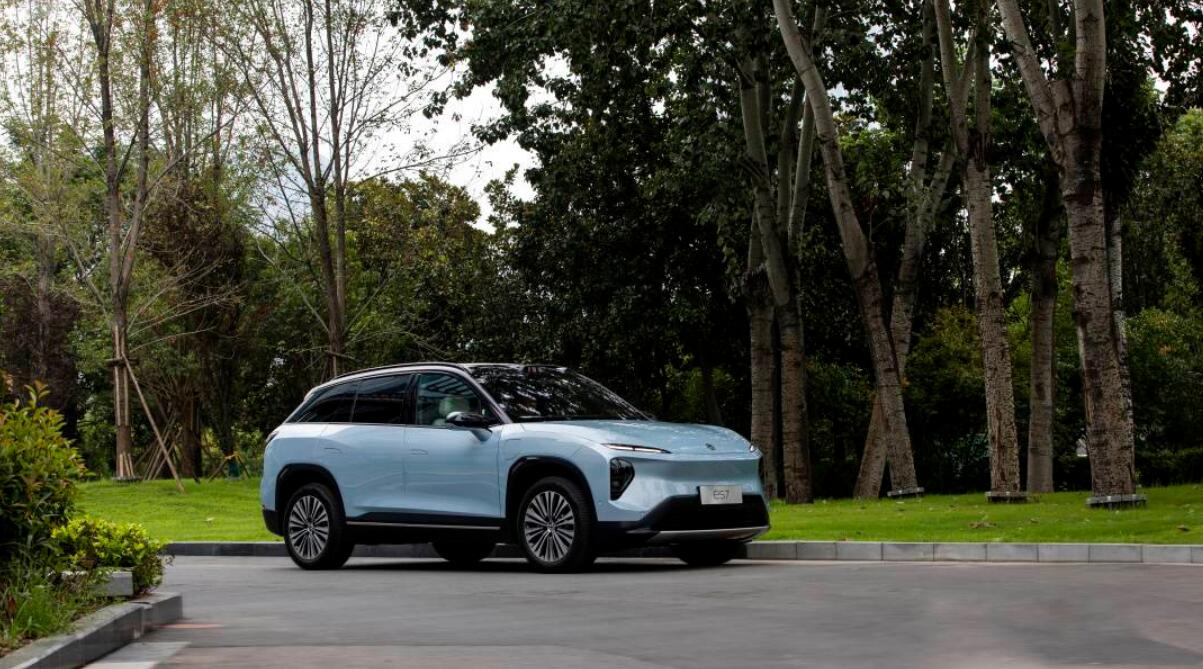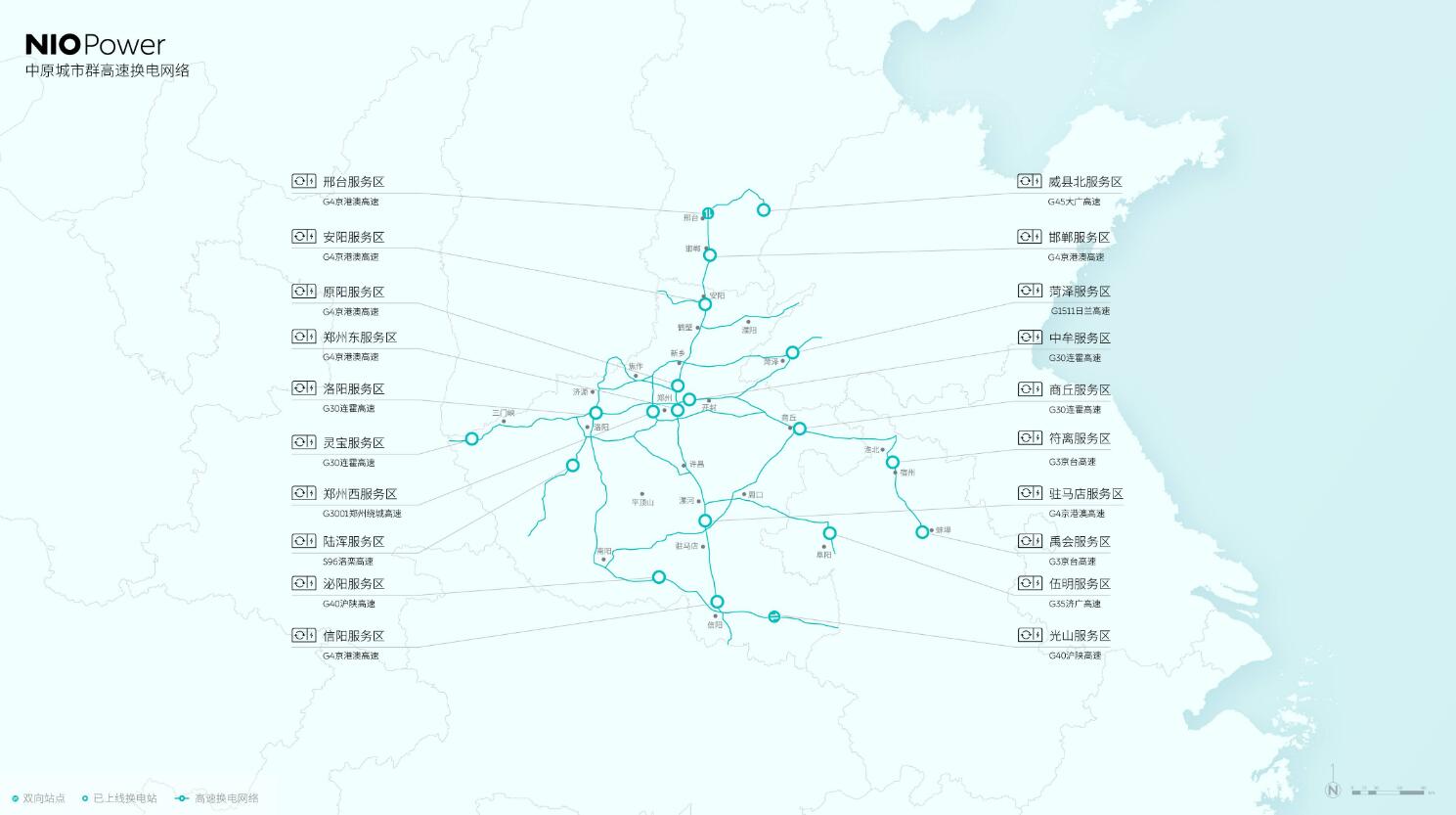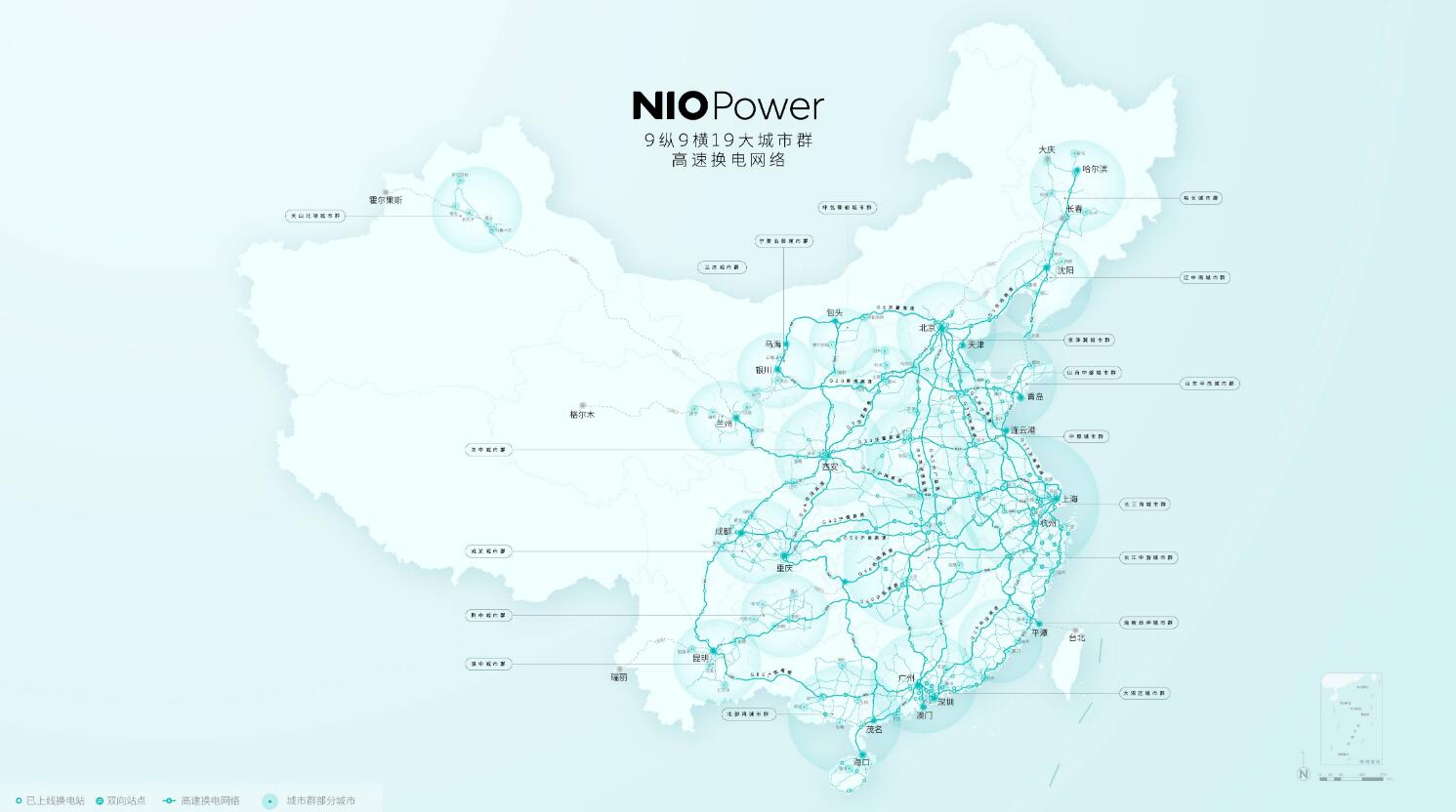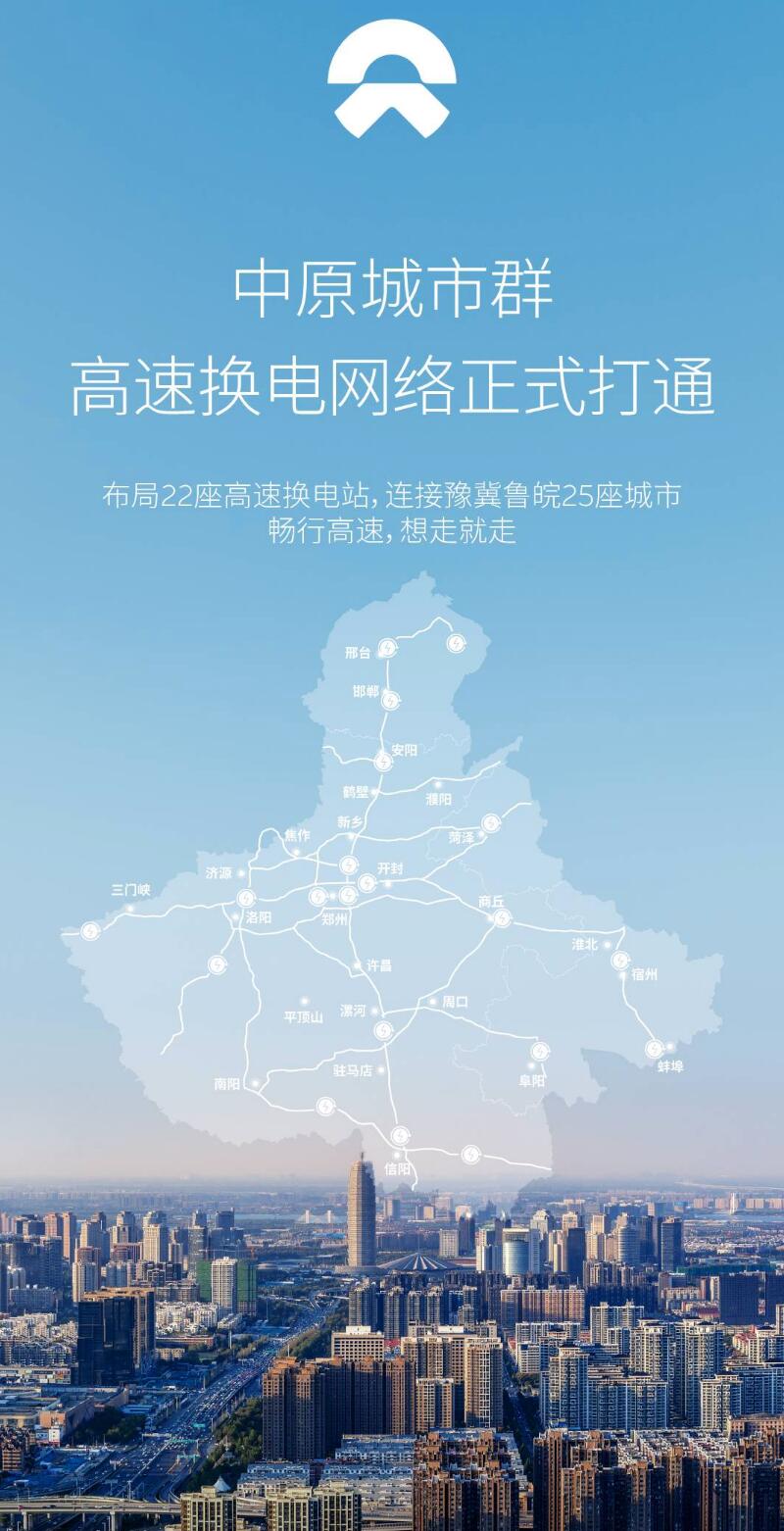Nio's 22 battery swap stations located along highways connect 25 cities in Henan, Hebei, Anhui and Shandong.
(Image credit: Nio)
Nio's (NYSE: NIO) battery swap network has completed coverage of yet another city cluster as the company continues its plans to build out its energy replenishment infrastructure.
The energy replenishment network completed initial coverage of a cluster of cities in central China today, connecting 25 cities in Henan, Hebei, Anhui, and Shandong using 22 battery swap stations located along highways, Nio announced today on its mobile app.
These battery swap stations cover sections of several major highways in the region, including the G3 Beijing-Taipei Expressway, G4 Beijing-Macao Expressway, G30 Lianyungang-Horgos Expressway, and G40 Shanghai-Xi'an Expressway.
Nio put six new battery swap stations into operation today, bringing the total to 1,264, and 338 of them are located along the highway, data monitored by CnEVPost show.
The company aims to have more than 1,300 battery swap stations in China by the end of this year.
As of December 15, Nio also had 2,204 charging stations in China, offering 12,902 charging piles.
The central China city cluster is the latest in Nio's battery swap station network coverage, which now includes eight city clusters, including the Beijing-Tianjin-Hebei city cluster and the Yangtze River Delta city cluster.
On July 6, Nio said at the second Nio Power Day event that it will complete a battery swap network covering nine vertical highways, nine horizontal highways and 19 urban clusters in China by 2025.
Nio expects to have more than 4,000 battery swap stations worldwide by 2025, with 1,000 of them located overseas, the company said at the time.
By 2025, more than 90 percent of Nio customers will have at least one battery swap station within three kilometers of their homes.




